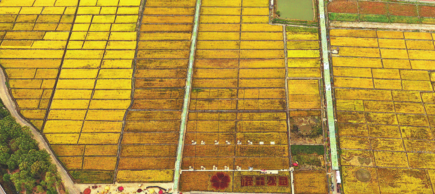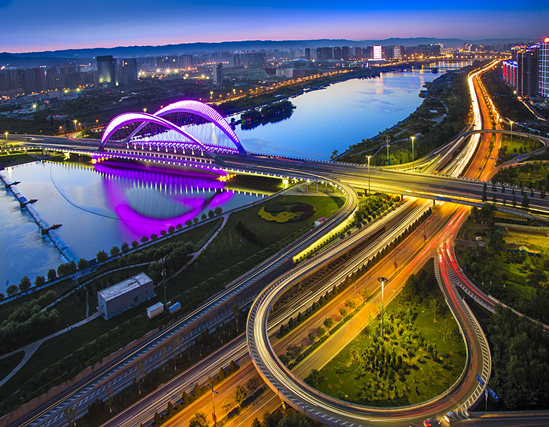Agricultural revolution lifts yields and profits
Updated: 2023-10-13

A rice farm in the suburbs of Taiyuan is ready for harvest. [Photo by Wang Ruirui for China Daily]
Autumn is the busiest season for farmers in Shanxi as they harvest various crops after more than half a year of labor.
It is also the happiest season, as they have seen their incomes from farming increase year-on-year. Many of them said that the increases in output and revenue are a result of farming modernization, the intensive use of technologies and innovations in operational models.
On Oct 5, Li Gaizhuan, a farmer in Zhuangwo village in the county of Wuzhai, was busy harvesting potatoes on his farm. The farm is part of the Wuzhai potato modernization base, which uses new breeding technologies to cultivate high-output and high-quality varieties.
"We estimate the per-hectare yield of potatoes can reach 90 metric tons on my farm, as well as those in my neighborhood," Li said. "That will be a 200 percent increase compared with the output from farms using conventional farming methods."
Xue Cunbo, deputy chief of the Shanxi Seedling Industry Development Center, referred to the farming modernization move as a "potato revolution".
"It is called a revolution because this move represents a total turnaround to potato farming, from seedling to deep processing," Xue said.
In Wuzhai, the potato modernization base covers more than 6,600 hectares of land in 43 villages.
"Potatoes there are mainly sold to deep-processing enterprises for making a variety of products based on potato starch, like medicines, health food and skin care products," Xue said. "Potatoes used for processing have higher prices than the conventional varieties. This means further increases in farmers' revenues."
Like the potato sector, agricultural industrialization has become a trend in Shanxi's farming industries.
Local officials said Shanxi's recent moves in promoting agricultural industrialization include developing high-standard modernized farming industry parks, industrial clusters and characteristic towns with specialty products. They aim to build an industry chain ranging from research to farming and processing.
Shanxi is now home to four national-level agricultural industrial clusters, nine national-level modern farming industry parks and 34 national-level characteristic towns for farming. It also boasts 2,850 enterprises engaged in the farming industry chain.
It is estimated that the annual output value of the farming products processing industry can reach 430 billion yuan ($58.95 billion) in 2025, becoming one of the economic pillars in Shanxi.
Another effort in boosting Shanxi's agricultural development is promoting new operational models. These include forging partnerships between farmers and farming companies, setting up farming cooperatives and using e-commerce tools, trade shows and branding strategies for the sales of farm produce and processed products.
In the county of Xixian, a harvest festival is held from mid-September to mid-October.
Duan Jianjun, chief of a farming cooperative in the county, said he is happy to welcome groups of visitors to its pear farms.
"They are here to pick pears and bring them home," Duan said. "We have held several sessions of the festival in Xixian and this year we have the largest number of visitors here."
He explained that this is because of the increasing recognition of local pears after they were included in a provincial campaign for farm-produced brands. Xixian's top-quality pears are now collectively known as "Jade Dew Fragrant Pear".
In Shanxi, the provincial marketing campaigns for local produce include the accreditation of 1,938 organic products, 176 products with geographical indications and 119 high-quality specialty products, according to local officials.
Wang Xiujuan contributed to this story.



